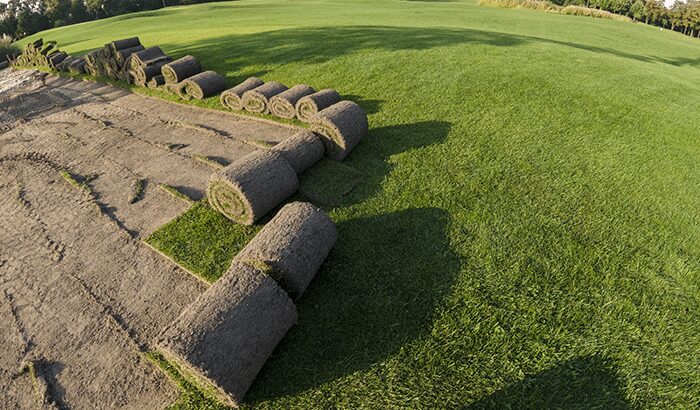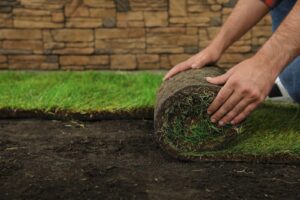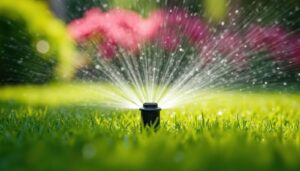We often are asked if you can lay new sod in winter; the answer depends on the climate in your area and the type of sod you are laying.
Even though temperatures have dropped and we are nearing the official start of winter, construction and home improvement projects are continuing. A beautiful, green, lush lawn come spring is highly desirable, which means installing sod during this cold season, raising some challenges.
Learn more about laying sod during the winter months below.
Is It Possible to Lay New Sod in Winter?
Yes, you can install sod during the winter. However, it is crucial to understand that, depending on the climate in your area, it may not be the best time to do it and could result in grass that never sets down roots. Sod mimics the air temperatures since it sits at the soil’s surface and can freeze if the air is at 32° Fahrenheit or below. Here are some things to note and steps you can take to increase your chances of successfully laying sod in the winter:
- There are two types of grass that do best in Utah weather and can be installed in winter: Bermuda and Kentucky Bluegrass. These types of grass become dormant in winter, turning brown, and will green up again in the warmer spring months.
- Before laying sod, make sure any existing grass or weeds are removed from the desired area.
- Gather a soil sample to check for fertilizer and lime needs before preparing the area.
- Add necessary potassium, sulfur, phosphorus, and lime, then till the ground at a minimum depth of three to four inches and level the soil.
- Dampen the area you wish to install sod and lay in a brick-like pattern perpendicular to any slopes.
- Use a sod roller to eliminate any air pockets that may cause winter damage or roots to dry out.
- Water the sod (more on that below!).
Watering New Sod in Winter
Make sure you water your new sod immediately after it’s installed. Depending on weather conditions, you may need to water it a few times a day for a few weeks. Your sod needs plenty of moisture so it can take root and green up come spring. Watch the weather and check your grass every day. When it snows, you’ll need to alter your watering patterns. It’s certainly a balancing act for a bit.
One significant advantage of laying sod in the winter is that you probably won’t need to use as much water since the ground is already wet from snow and rain. However, if there isn’t snow or rain, and the weather is cold and dry, a windy can quickly dry out roots, destroying your sod. Also, it can be tricky to water your grass if your sprinkling system has been turned off for the season.
Contact Monarch Sod Today!
To learn more about laying new sod in winter and the services we offer, contact the professionals at Monarch Sod. Our team of experts delivers high-quality Kentucky Bluegrass sod to Utah County, including American Fork, Lehi, and neighboring cities. Contact us for a quick quote today.
var /*99586587347*/ toto slot











